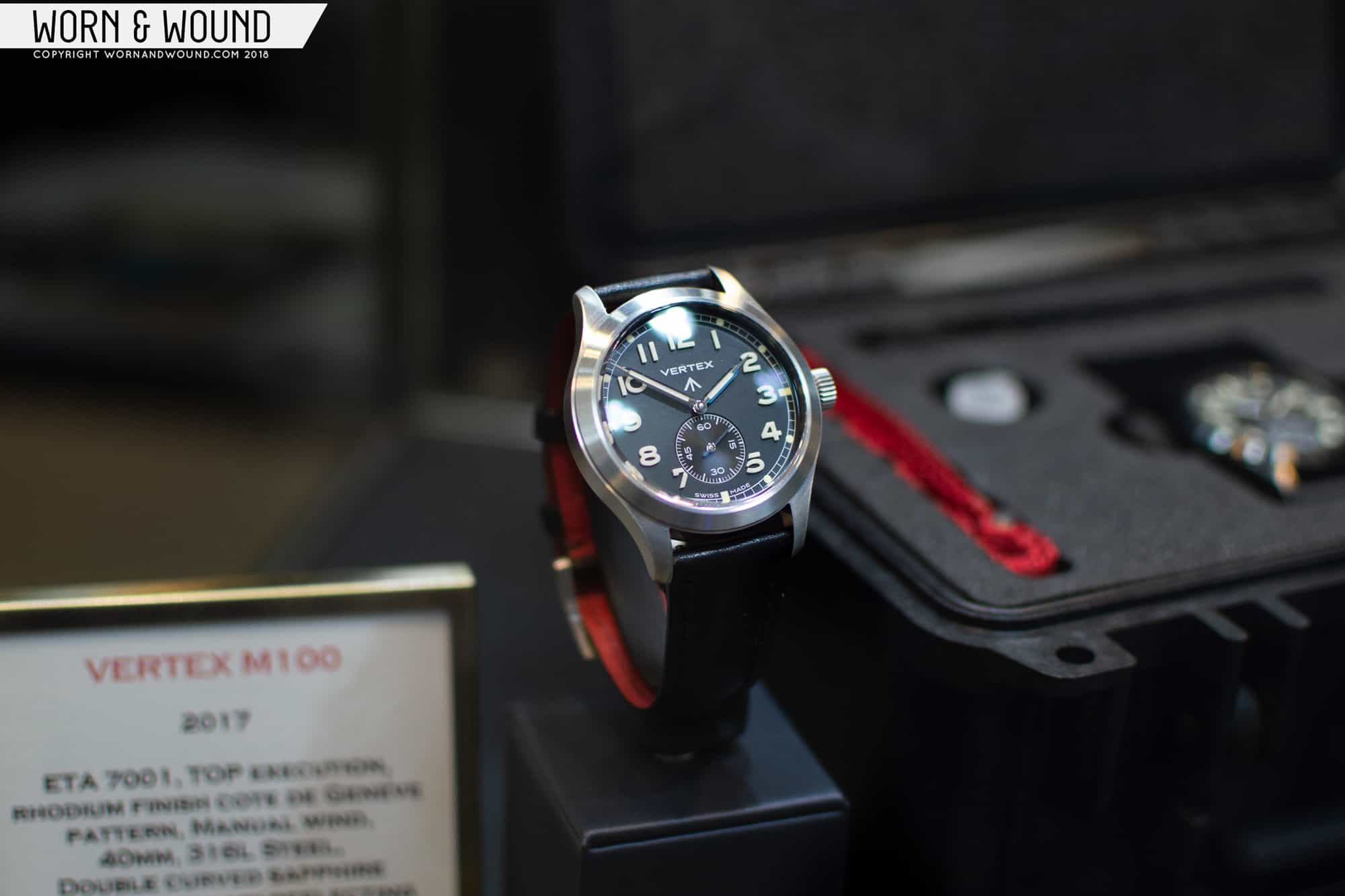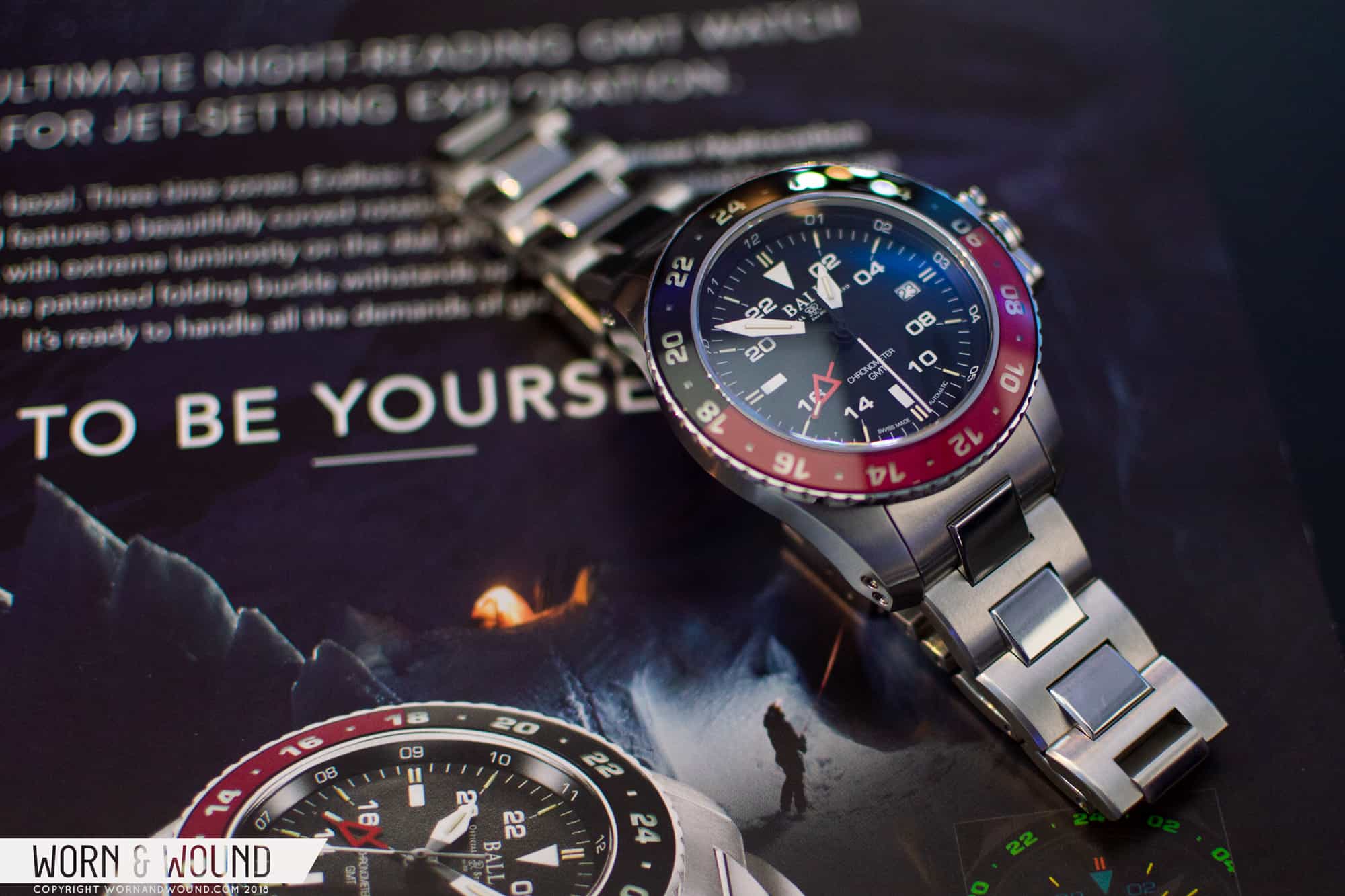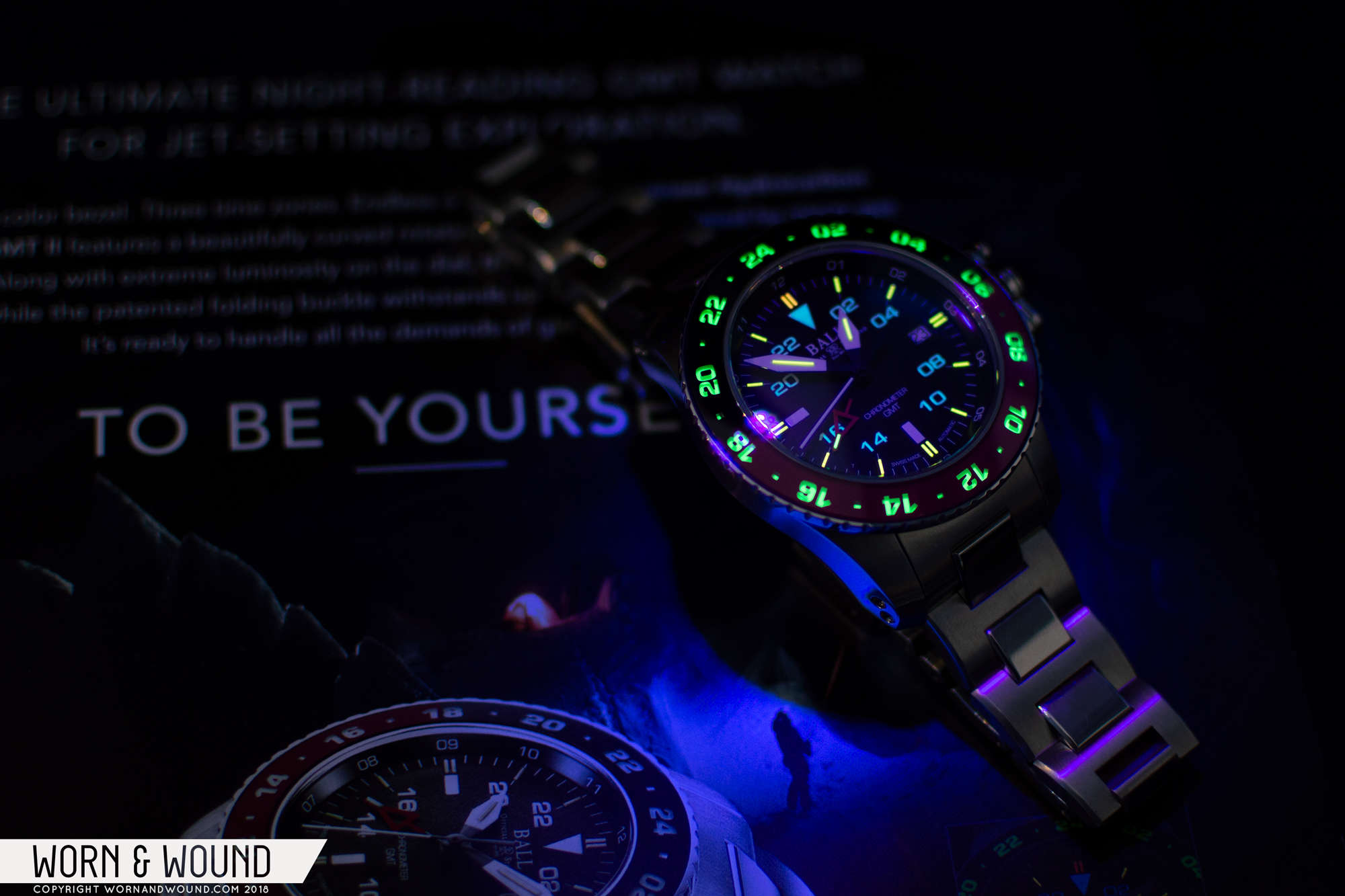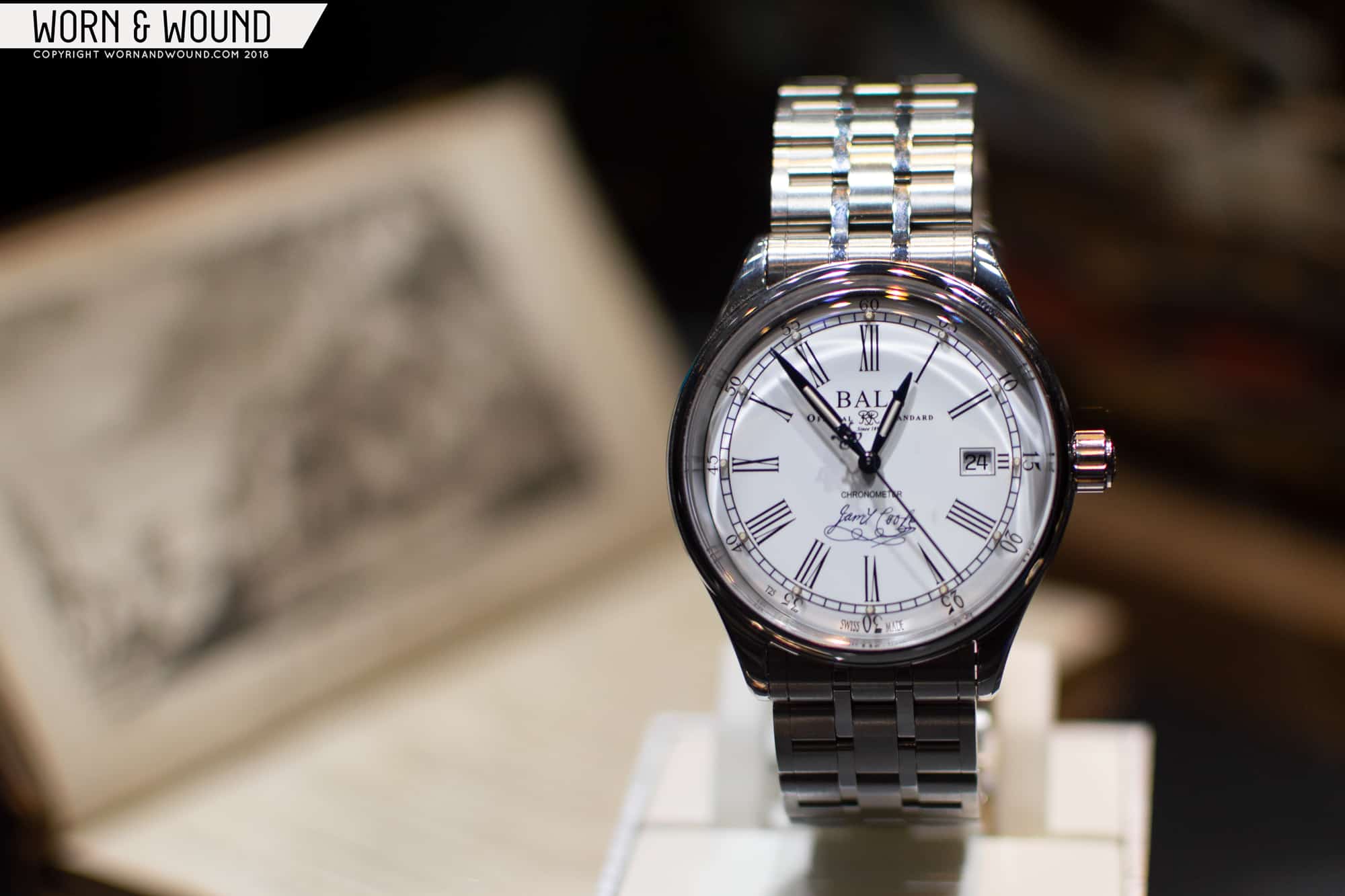Perhaps rather surprisingly, London doesn’t play host to many sizable watch shows. Despite the many boutiques and watch enthusiasts on the streets, opportunities for the two to collide at a large scale event are limited. The annual SalonQP exhibition in November provides a welcome opportunity for an open and receptive watch lover such as myself to peruse, try on, and chat about a range of horological goodies all under one roof.
This year’s event was the first under new management and the shift in focus that the change in stewardship brought about also saw a notable absence of some of the show’s previous stalwarts (I’m looking at you, Nomos). This switch-up did make way for some fresh experiences, even if the three brands that made the biggest impact on me are not new—in fact, all three started out many moons ago, and with two of them experiencing a resurrection of sorts in recent years.
First up is Vertex. Vertex was one of the original “dirty dozen” manufacturers producing purposeful wristwatches built to military specifications in the 1940s. Another victim of the quartz crisis, the company closed its doors in 1972. Fast forward to 2017, when Don Cochrane, the great-grandson of Vertex founder Claude Octavius Lyons, relaunched the brand with the M100—a tribute to a watch from over seven decades before.
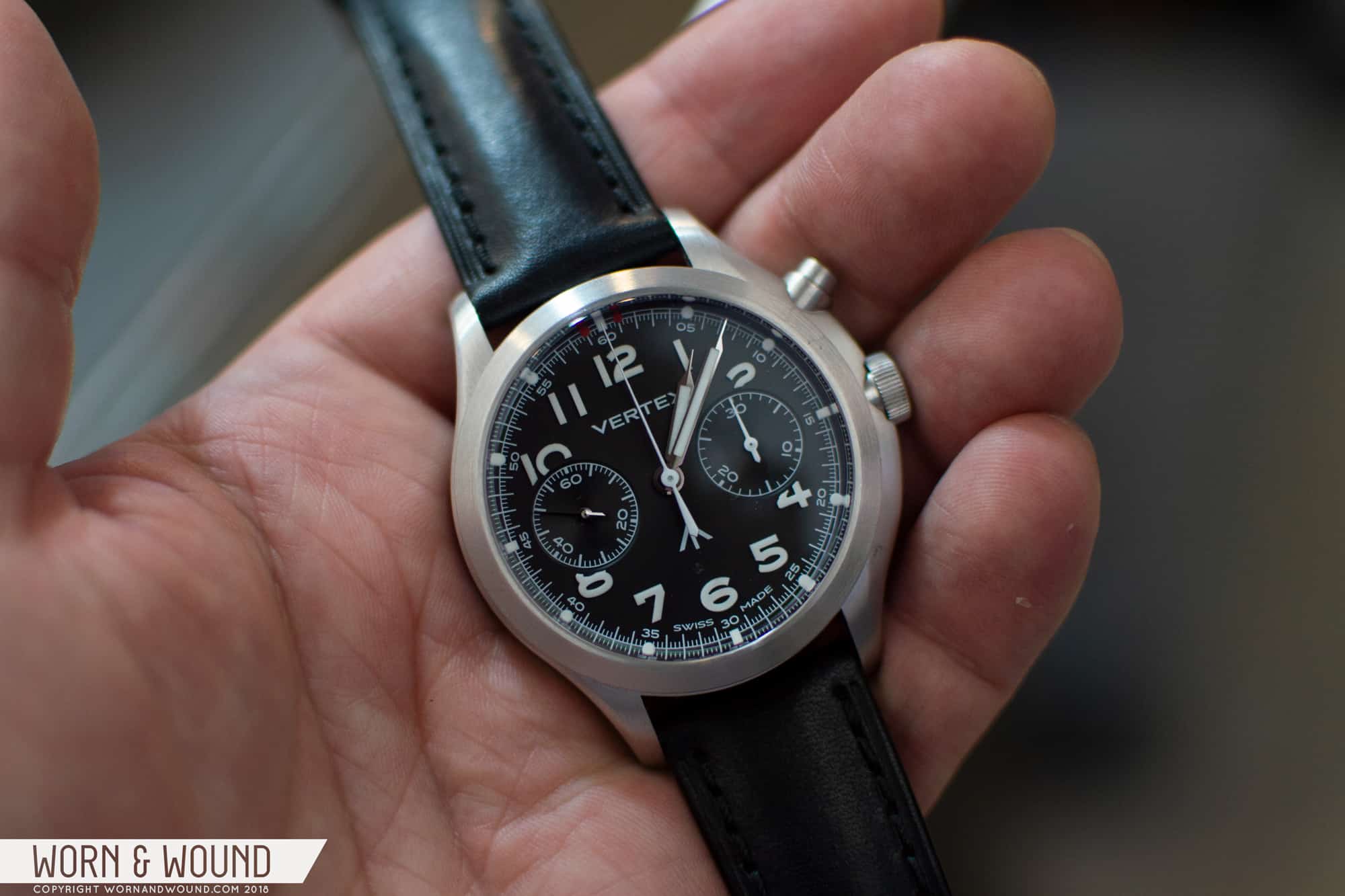









 Featured Videos
Featured Videos





